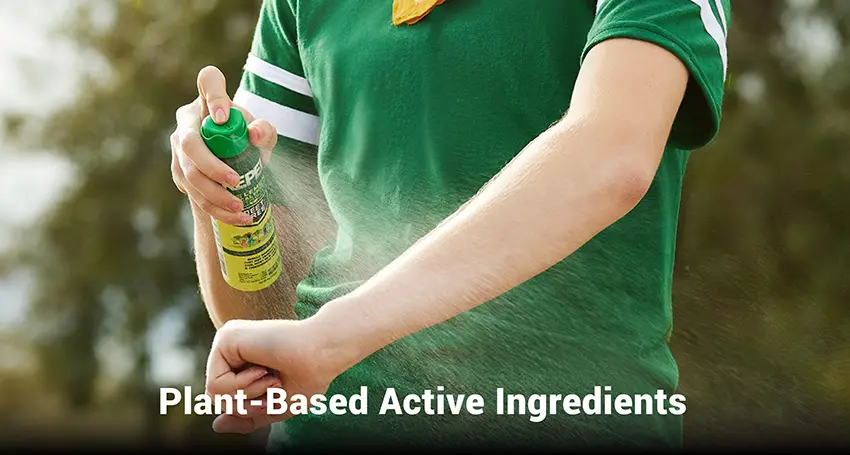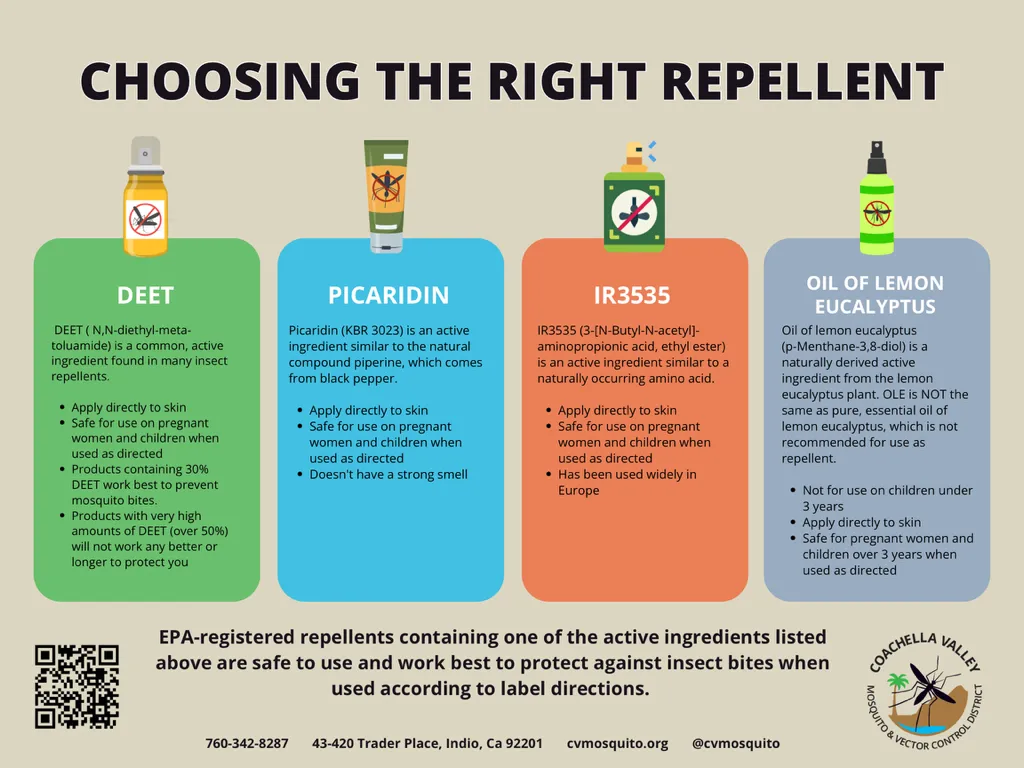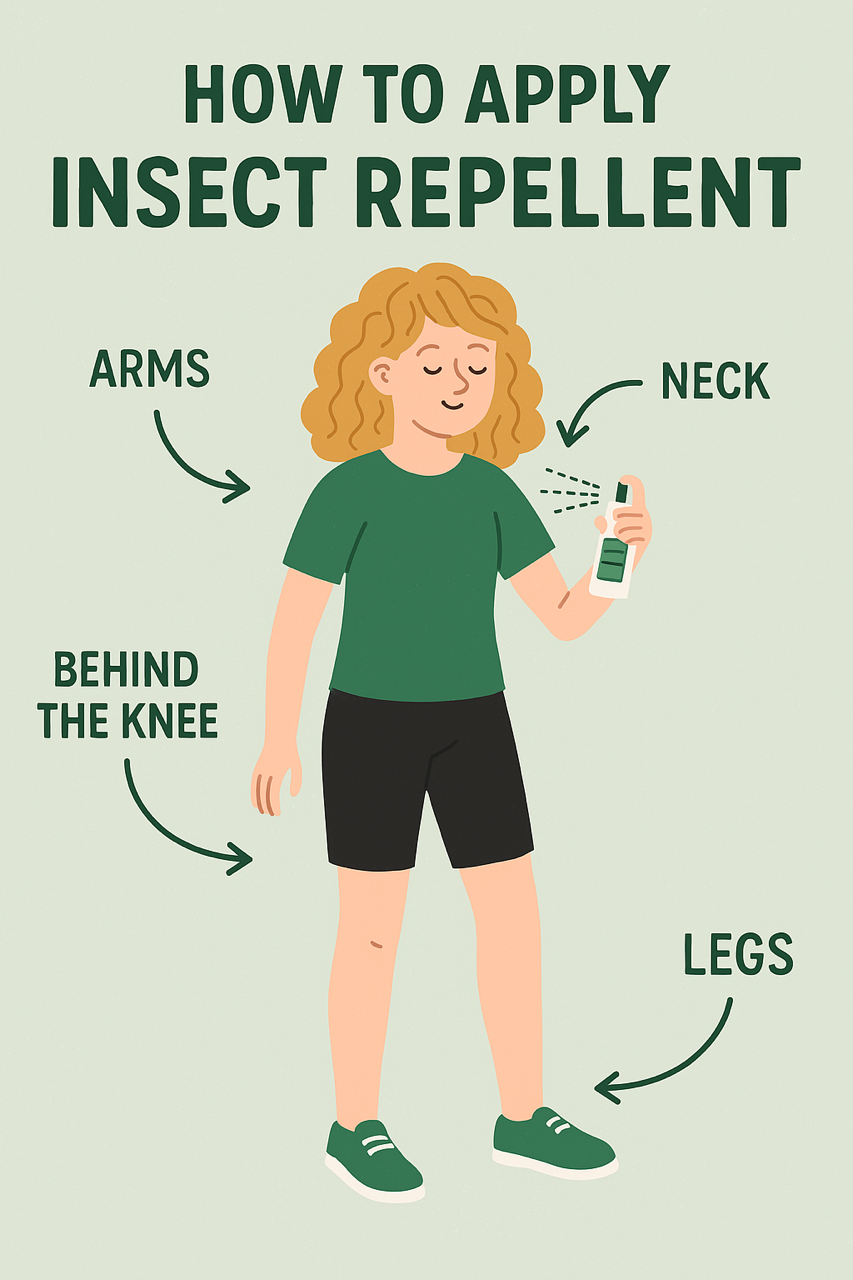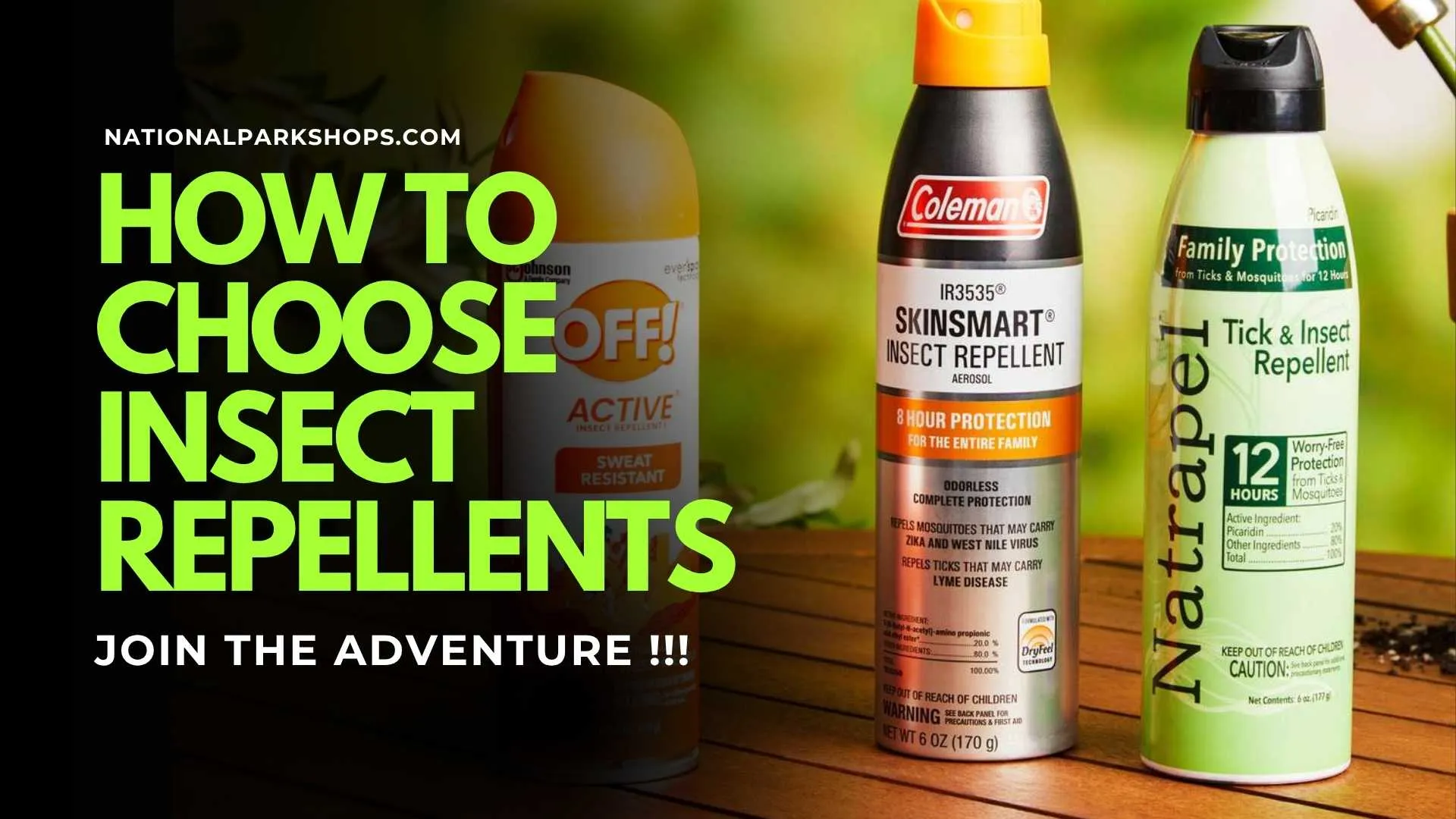Choosing the right insect repellent in 2025 means more than just grabbing a spray off the shelf. With evolving formulas, natural alternatives, and region-specific protection needs, it's important to know what actually works—especially if you’re planning to hike, camp, or travel outdoors. In this guide, National Park Shops break down how to pick the best insect repellents for your skin type, destination, and lifestyle—so you can stay bite-free and worry-free.
Why Insect Repellents Are Essential for Outdoor Adventures
Outdoor environments expose adventurers to a variety of biting insects, from mosquitoes thriving in humid conditions to ticks lurking in tall grasses. As someone who’s endured swarms during summer hikes and campfire evenings, I know the importance of a reliable repellent. Beyond preventing itchy bites, repellents reduce the risk of insect-borne illnesses, which the Centers for Disease Control and Prevention (CDC) notes can be transmitted by mosquitoes (West Nile, Zika) and ticks (Lyme disease). The Environmental Protection Agency (EPA) regulates repellents, ensuring safety and efficacy when used as directed, but not all products perform equally. Consumer Reports’ 2025 testing, involving volunteers exposing their arms to cages of 200 mosquitoes, highlights the variability in performance, with top products lasting up to eight hours while others fail within an hour. Choosing the right repellent means balancing effectiveness, safety, and comfort for your specific outdoor activities.
READ MORE: 7 Best Insect Repellents of 2025: Comprehensive Review
Understanding Active Ingredients
The effectiveness of an insect repellent hinges on its active ingredient, and in 2025, four EPA-approved options dominate: DEET, picaridin, oil of lemon eucalyptus (OLE), and IR3535. Each has unique strengths, and my experiences align with expert findings from sources like Consumer Reports and the American Mosquito Control Association.
DEET, developed by the U.S. Army in 1946, remains the gold standard for its long-lasting protection against mosquitoes, ticks, and some flies. Available in concentrations from 5% to 100%, products with 15-30% DEET, like Cutter Backwoods Dry (25% DEET), offer up to 10 hours of protection without the need for higher concentrations, which can feel greasy and smell unpleasant. During a multi-day camping trip, I used a 25% DEET spray and avoided bites despite heavy mosquito presence, though I washed it off thoroughly afterward to avoid plastic damage, as DEET can degrade synthetic materials like sunglasses. The CDC confirms DEET’s safety when used as directed, with rare skin irritation linked to overuse, making it ideal for buggy environments but less appealing for those sensitive to its odor.

Picaridin, a synthetic derived from black pepper plants, is a close rival to DEET. At 20% concentration, products like Sawyer Products 20% Picaridin Insect Repellent match DEET’s efficacy, repelling mosquitoes and ticks for up to 12 hours, as noted by Wirecutter in 2025. I tested a picaridin pump spray during a humid evening hike and appreciated its odorless, non-greasy feel, which didn’t irritate my skin or damage gear. Unlike DEET, picaridin is gentler on plastics and fabrics, making it a favorite for backpackers carrying sensitive equipment. A 2024 NBC News review highlights its safety for infants over two months and pregnant women, though it can irritate eyes if misapplied.
Oil of lemon eucalyptus (OLE), a refined plant-based compound (PMD), is the top DEET-free option, with 30% formulations like Repel Plant-Based Lemon Eucalyptus offering up to six hours of protection. During a family camping trip, I used OLE on my kids (over three years, per label instructions) and found it effective in moderate mosquito conditions, with a mild, pleasant scent. However, Consumer Reports notes OLE’s shorter duration compared to DEET or picaridin, and it’s not recommended for children under three due to limited safety data. IR3535, found in products like Coleman SkinSmart (20%), provides similar protection to 10% DEET, lasting up to eight hours, as tested by CNN Underscored in 2025. I found its aerosol spray easy to apply during a beach outing, though it required reapplication after swimming.
Natural repellents, like citronella or peppermint oil, consistently underperform. Consumer Reports’ 2025 tests gave “natural” products dismal scores, and my attempts with citronella-based sprays during a backyard campfire failed to deter mosquitoes after an hour. The Environmental Working Group (EWG) advises against relying on these for high-risk areas due to their limited efficacy.
Choosing the Right Application Method
Insect repellents come in sprays, lotions, wipes, and clothing treatments, each suited to different needs. My experiences align with expert recommendations from sources like Travel + Leisure and WIRED, which emphasize personal preference and activity type.
Sprays, including pump and aerosol options, are versatile for covering large skin areas or clothing. During a kayaking trip, I used OFF! Active Insect Repellent (15% DEET), appreciating its even aerosol dispersion, which didn’t require rubbing in and left no greasy residue. Pump sprays, like Proven 20% Picaridin, are ideal for precise application and travel, fitting TSA-compliant bags, as noted by CNN Underscored. However, aerosol cans can leak, as one Amazon reviewer experienced with OFF! Deep Woods, so secure caps are crucial.
Lotions, such as Sawyer Premium Picaridin Lotion, ensure thorough coverage, especially for sensitive areas like the face. I applied lotion to my kids during a picnic, finding it easier to control than sprays, though it’s less practical for clothing, per National Geographic. Wipes, like Ben’s Tick & Insect Repellent Wipes (30% DEET), are compact for backpacking, as I discovered on a multi-day hike, where their portability saved space. However, they cover less surface area, requiring multiple wipes for full-body use, as noted by Travel + Leisure.
Permethrin, an insecticide for clothing and gear, complements skin-applied repellents. I treated my hiking pants with Sawyer Permethrin before a tick-heavy trail, and it repelled ticks for weeks, as claimed by Outdoor Life. Permethrin requires advance application and drying, but it’s a game-changer for backcountry trips, though it’s not safe for skin, per EPA guidelines.

Factors to Consider for Outdoor Activities
Selecting a repellent depends on your activity, environment, and personal needs. For hiking or camping in mosquito-heavy areas, I recommend 20% picaridin or 25-30% DEET for long-lasting protection, as Consumer Reports found these outperform others in high-bug conditions. During a summer hike, I used Ranger Ready Picaridin 20%, which kept mosquitoes at bay for 10 hours, and its trigger spray was travel-friendly, per Wirecutter. For tick-prone trails, permethrin-treated clothing paired with DEET or picaridin on skin, as suggested by the Appalachian Mountain Club, offers robust defense.
For water-based activities like kayaking or fishing, choose water-resistant formulas and reapply after swimming or sweating, as I did with Coleman SkinSmart after a paddle. Families with kids should opt for lower DEET concentrations (10-15%) or 20% picaridin, as advised by the American Academy of Pediatrics, ensuring safety for children over two months. I used Natrapel 20% Picaridin for my family, appreciating its TSA-compliant size and fresh scent, as noted by Travel + Leisure.
Consider environmental factors like humidity and insect prevalence. In humid, mosquito-heavy areas, OLE may suffice for shorter outings, but DEET or picaridin is better for extended exposure, per EWG. For low-bug conditions, like casual backyard gatherings, a milder option like Murphy’s Naturals (OLE-based) can work if reapplied frequently, as I found during a barbecue, aligning with Outdoor Life’s findings.
Application Tips for Maximum Effectiveness
Proper application is critical for repellent efficacy, as emphasized by Consumer Reports and the EPA. I apply a thin, even layer to exposed skin, avoiding eyes, lips, and wounds, and test on a small area first to check for irritation. For sprays, I hold the bottle 6-8 inches away, as I did with OFF! Active, ensuring even coverage without overspray. Lotions require rubbing in, which I found effective for precise facial application. Reapply every 4-12 hours, depending on the product—DEET and picaridin last longer than OLE, per CDC guidelines. After applying sunscreen, wait 15 minutes before adding repellent to avoid reducing sunscreen efficacy, as noted by a Reddit user on r/camping.
For clothing, I treat gear with permethrin 24-48 hours before a trip, letting it dry fully, as Sawyer’s instructions recommend. Wash repellents off with soap and water indoors to prevent skin irritation, especially for kids. Store products securely to avoid leaks, as I learned after a pump spray spilled in my backpack.

Top Picks for 2025
Based on my testing and expert reviews from 2025, several repellents stand out. Sawyer Products 20% Picaridin is my top choice for its odorless, non-greasy formula and 12-hour protection, ideal for hiking and family use. Cutter Backwoods Dry (25% DEET) excels for buggy environments, offering 10 hours of protection with a mild scent, as praised by CNN Underscored. Repel Plant-Based Lemon Eucalyptus (30% OLE) is the best DEET-free option for shorter outings, though it requires frequent reapplication. Ben’s Tick & Insect Repellent Wipes (30% DEET) are perfect for backpackers due to their portability, earning top marks from Consumer Reports. Sawyer Permethrin is essential for treating gear, lasting up to six weeks, as Outdoor Life confirms.
Why Choosing the Right Repellent Matters
Selecting the best insect repellent in 2025 involves balancing efficacy, comfort, and safety. DEET, picaridin, and OLE offer proven protection, with picaridin standing out for its gentle feel and versatility, as I’ve experienced on countless trails. Application method and environmental factors, like insect density and activity duration, guide your choice. By choosing EPA-registered products and following label instructions, you can enjoy outdoor adventures without the worry of bites or disease. Whether you’re hiking, camping, or kayaking, a well-chosen repellent ensures you focus on the beauty of nature, not the buzz of insects.
Conclusion
In 2025, the best insect repellent is the one that suits your environment, activity, and skin sensitivity. Whether you're trekking through mosquito-heavy trails, planning a tropical vacation, or just relaxing in your backyard, choosing the right product can make a huge difference. Prioritize proven ingredients like DEET, Picaridin, or oil of lemon eucalyptus, and always check for duration of protection and reapplication guidelines.
By understanding your specific needs and reviewing labels carefully, you’ll be well-equipped to pick a safe, effective repellent. Stay protected, stay outdoors—and enjoy nature without the bites!!!

